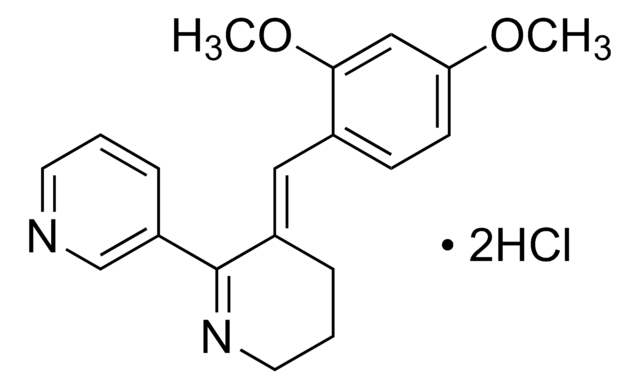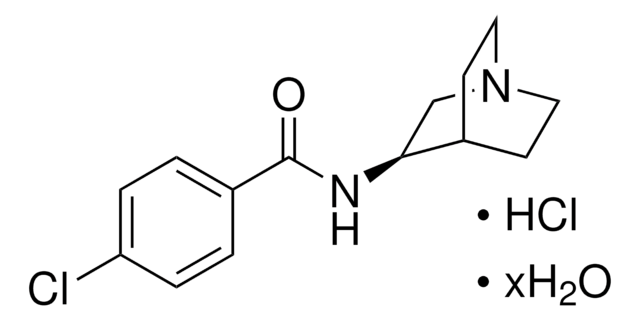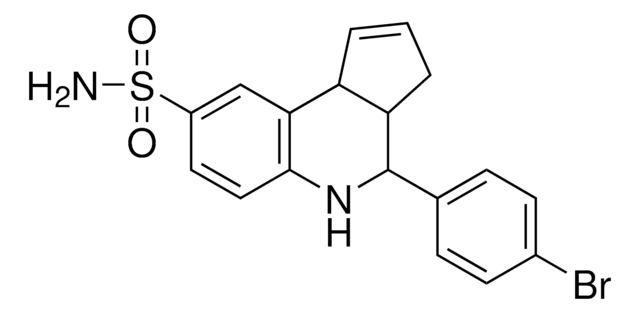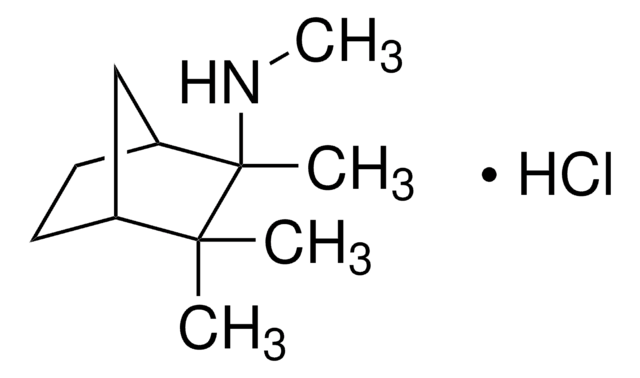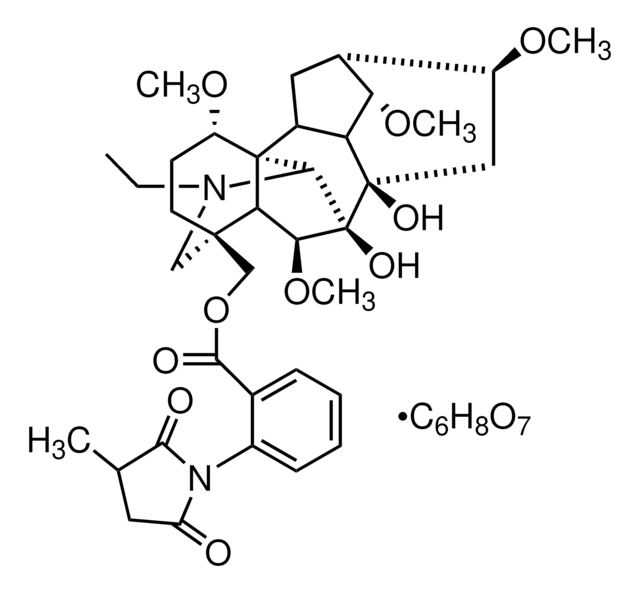SML0326
GTS-21
≥97% (HPLC)
Synonym(e):
3-(2,4-Dimethoxybenzylidene)-anabaseine dihydrochloride, DMBX-anabaseine, DMXB, DMXB-A, GTS21
About This Item
Empfohlene Produkte
Qualitätsniveau
Assay
≥97% (HPLC)
Form
powder
Farbe
faintly yellow to dark yellow
Löslichkeit
H2O: >5 mg/mL
Lagertemp.
2-8°C
SMILES String
Cl.Cl.COc1ccc(\C=C2/CCCN=C2c3cccnc3)c(OC)c1
InChI
1S/C19H20N2O2.2ClH/c1-22-17-8-7-14(18(12-17)23-2)11-15-5-4-10-21-19(15)16-6-3-9-20-13-16;;/h3,6-9,11-13H,4-5,10H2,1-2H3;2*1H/b15-11+;;
InChIKey
BXKYFUGAAFLYJL-BXGYHSFXSA-N
Anwendung
- as an α7 nicotinic acetylcholine receptors (nAChR) partial agonist to elucidate its anti-inflammatory effects in mouse macrophages
- to test its protective effect on the renal injury induced by lipopolysaccharide (LPS)
- to test its effect on microvascular inflammation in endotoxemia induced by LPS
Biochem./physiol. Wirkung
Leistungsmerkmale und Vorteile
Lagerklassenschlüssel
11 - Combustible Solids
WGK
WGK 3
Flammpunkt (°F)
Not applicable
Flammpunkt (°C)
Not applicable
Analysenzertifikate (COA)
Suchen Sie nach Analysenzertifikate (COA), indem Sie die Lot-/Chargennummer des Produkts eingeben. Lot- und Chargennummern sind auf dem Produktetikett hinter den Wörtern ‘Lot’ oder ‘Batch’ (Lot oder Charge) zu finden.
Besitzen Sie dieses Produkt bereits?
In der Dokumentenbibliothek finden Sie die Dokumentation zu den Produkten, die Sie kürzlich erworben haben.
Unser Team von Wissenschaftlern verfügt über Erfahrung in allen Forschungsbereichen einschließlich Life Science, Materialwissenschaften, chemischer Synthese, Chromatographie, Analytik und vielen mehr..
Setzen Sie sich mit dem technischen Dienst in Verbindung.
